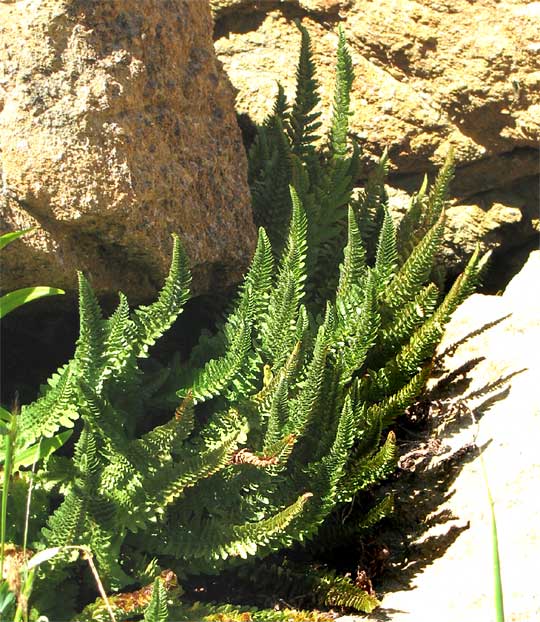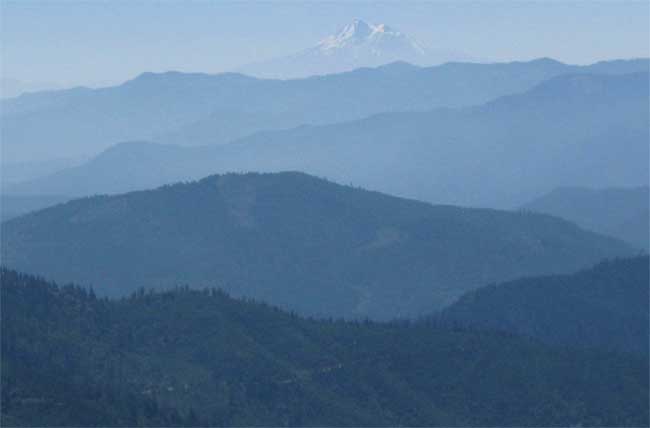Excerpts from Jim Conrad's
Naturalist Newsletter
from the July 26, 2009 Newsletter, describing a backpacking trip on the Pacific Crest National Scenic Trail in Red Buttes Wilderness Area, Siskiyou County, California:
SHASTA FERNS AT TOWHEAD LAKE
In warmer valleys below, two swordfern species in the genus Polystichum are abundant, but at our hike's higher elevation I didn't see a single one of those. In fact, ferns were conspicuously absent all along our trail -- until the last day, at Towhead Lake. Towhead Lake is a pretty, swimable tarn set among towering red cliffs and elephantine boulders of peridotite. There quite commonly we saw a stiff, frilly, curiously upwardly arching species of fern, always closely associated with peridotite, as shown below:

I'd never seen this species but when I examined its spore-producing fruitdots, or sori, on its fronds' undersurfaces the sori were very familiar, as shown below:

The sori are covered with membranous "indusia" attached to the frond by their centers, umbrellalike. This is exactly the way swordfern sori look, and it turns out that this is yet another member of the swordfern genus Polystichum. It's the Shasta Fern, also called Lemmon's Holly Fern, POLYSTICHUM LEMMONII.
This fern specializes in high-elevation serpentine outcrops (serpentine is closely associated with peridotite) and is distributed from British Columbia south into California, east to Idaho.
By the way, during most of our hike Mt. Shasta herself, 14,179-feet high (4,322 m), was clearly visible rising above the haze. That's her below:
